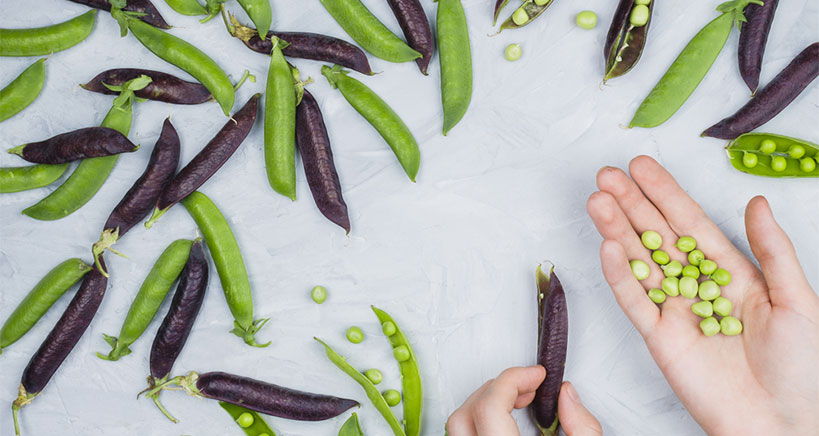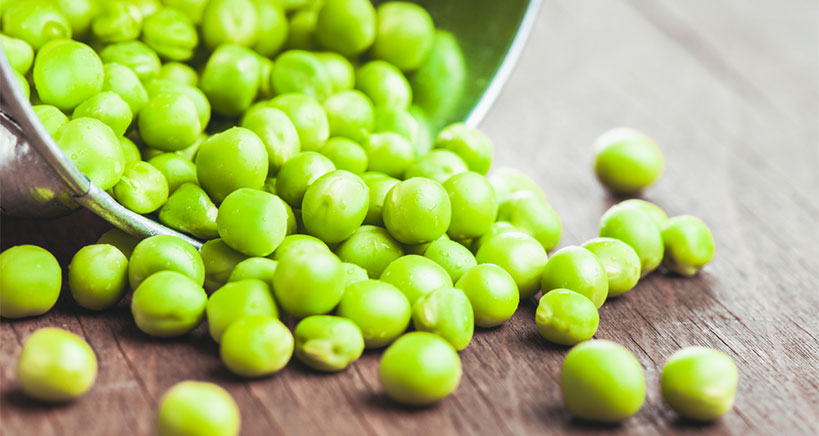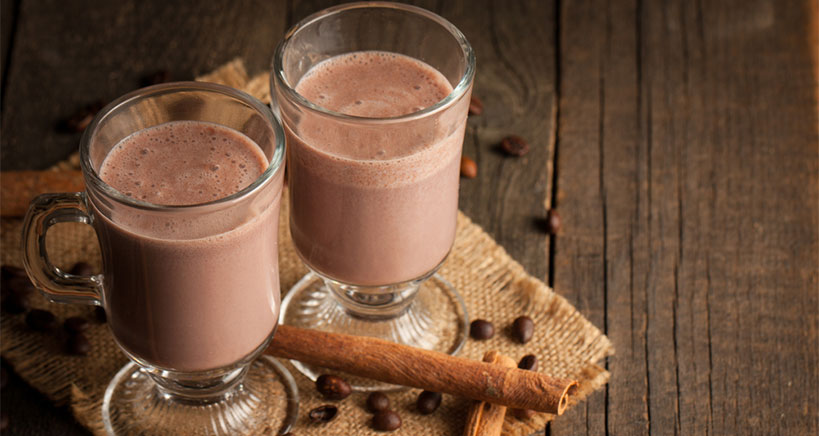
Pea Protein Presence on the Rise
Why are pea proteins showing up in more products, recipes, and restaurant menus? If you are a savvy foodservice professional striving to stay on top of your game by keeping up with the latest trends in the industry, this guide to pea proteins is exactly the recipe you’ve been looking for!
Why Pea Proteins are Trending
The facts are in: Pea proteins are rapidly gaining popularity as consumers are hungry for plant-based alternatives to meat and dairy, as well as healthier food choices. Adding to their assets is the fact that pea proteins are naturally free of gluten, nuts, and wheat, making them the perfect pick for consumers with celiac disease and food allergies. Increasingly found in a variety of food products, from protein powders to veggie burgers to milk, pea proteins are easy on the digestive system and taste good to boot!
Who Comprises the Pea Protein Market?
It’s not just vegans or consumers with dietary restrictions who are clamoring for pea protein, nor is it solely in demand from health-conscious individuals, the sports sector, or the weight management population. Rather, according to reports from Food Dive, provider of news and analysis for food industry executives, suppliers such as Roquette and Ripple Foods claim that their pea-based products taste better and are more environmentally friendly than other plant-based products on the market. Likewise, the popular Beyond Meat company cites pea protein as a major ingredient in their plant-based protein burgers.
It will therefore not surprise you to learn that while estimates vary, reports suggest that the global pea protein market value, already estimated at $32.09 million in 2017, is projected to reach $176.03 million by 2025!
Where Does Pea Protein Come From?
Made from yellow split peas, here is how the protein is produced: Yellow split peas are dried and ground; next, to remove the starch, they are soaked in a saline solution; the now protein-rich compound is ground again to achieve the desired consistency; pea protein is ready to eat or be packaged to sell.
Three Forms of Pea Protein
There are three functions and three forms of pea protein. Used to hold water, for more browning, or for gelation (especially in the case of gluten-free products), pea proteins are produced as:
- Isolates – a powder form that boasts the highest concentration of protein (25g protein/100-calorie serving)
- Concentrates – slightly less protein with some carbs and fat
- Flours – an increasingly popular ingredient in the baking industry

Pea Protein Packs a Nutritional Punch
Sufficient protein is essential to the body’s health, providing the building blocks we need to function properly. Small but mighty, here are some of the nutritional benefits and deficits of pea proteins:
- At 25%, their protein content exceeds that of both rice and wheat
- While falling short of the protein content in soy (34%), peas are more sustainably produced, fortifying the soil and requiring less water to grow
- They are also an environmentally friendlier choice over animal proteins, requiring less water and energy resources to produce
- Although not a complete protein providing all nine essential amino acids, if peas are not your only source of protein, your body is good to go!
- The protein’s high levels of branch chain amino acids (BCAA) make it ideal for muscle building, rebuilding, and as a post-workout selection
- According to research, pea proteins may help reduce cholesterol and triglyceride levels, increase calcium absorption, improve blood circulation, regulate blood sugar levels, and boost metabolism
Pea Protein in Foodservice
If you work in the restaurant biz and are wondering why all the buzz about pea protein, you might want to chew on the following recent Washington Post article: “Coming to grocery shelves in 2019: Mushroom/meat mixes, pea protein and banana milk.” You might also be interested to learn that pioneering pea yogurt made a debut at this year’s annual Food and Nutrition Conference and Expo. So whether you run a catering service, bakery, fast-food joint, or restaurant, it’s time for a 2019 menu update that includes versatile pea protein.
Pea Protein in the Beverage Industry
Already a rising star in the food industry, pea protein is now creating an equally impressive stir in the beverage business. According to DuPont Nutrition & Health Beverage Applications Leader, Rosa Sanchez, the company’s pea protein powders, which are added to beverages, offer superior flavor, with consumer experience panels giving them an additional thumbs-up for thickness, mouth feel, and aftertaste. Manufactured as a high-protein dry blend, the powders are created especially for the ready-to-drink beverage market and are scoring big when compared to other novel plant protein sources. The firm has also introduced pea protein nuggets for snacks and is including them in recipes for nutrition bars, cereals, and toppings.
How to Add Pea Protein to Your Recipes and Menus
Did you know that advances in research and development have vastly improved the technology behind plant-based textures and flavors? This means it is easier than ever before for your bakers and chefs to get on board the pea protein wagon and offer your customers a palate-pleasing surprise!
Here are some practical and creative ways to get you started:
- Add to muffins, donuts, protein bars, brownies, and pasta dishes
- Mix with lentil flour to make pea protein chips
- The easiest and most popular use of pea protein is in the gamut of vegan smoothie and shake recipes! Simply add pea protein powder to coconut milk and berries, to your favorite yogurt smoothie, to your morning energy drink, or use in the following delectable recipe

Chocolate Banana Pea Protein Shake
Ingredients
- 1 frozen banana
- 3/4 cup water
- 1 optional pitted date (for sweetness)
- 2 tbsp. raw cacao powder
- 2 tbsp. pea protein powder
- 1/2 tsp. vanilla
- 1 cup ice cubes
Instructions
-
- In a high-speed blender, combine all ingredients except ice cubes, blending until completely smooth.
- Add ice cubes and blend again.
- Resulting smoothie should have a thick, milkshake-like texture.
- Enjoy!
In Summation
If you are looking for food and beverage trends to watch for in 2019, invest some time, research, and resources in learning all about pea protein products. Whether your customers are clamoring for vegetarian and plant-based dishes or are simply hungry for variety, pea protein enhanced foods and drinks are sure to excite and satisfy their taste buds. They are also a great way to enhance your menu, boost your biz, and savor the sweet taste of the rich rewards…